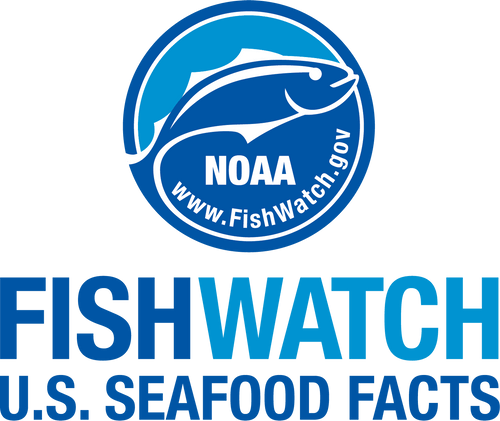 Black grouper at Flower Garden Banks National Marine Sanctuary. Credit: NOAA National Ocean Service
Black grouper at Flower Garden Banks National Marine Sanctuary. Credit: NOAA National Ocean Service
Black grouper at Flower Garden Banks National Marine Sanctuary. Credit: NOAA National Ocean Service
About the Species
 Black grouper at Flower Garden Banks National Marine Sanctuary. Credit: NOAA National Ocean Service
Black grouper at Flower Garden Banks National Marine Sanctuary. Credit: NOAA National Ocean Service
Black grouper at Flower Garden Banks National Marine Sanctuary. Credit: NOAA National Ocean Service
The black grouper is a large, bottom-dwelling reef fish found in the warm waters of the southeastern United States including the South Atlantic, Gulf of America* (formerly Gulf of Mexico), Florida Keys, and Caribbean. Recognized by their dark, blotchy patterns and powerful build, these fish are highly sought after for both commercial and recreational fishing due to their firm, mild-flavored meat. They inhabit rocky reefs and ledges, feeding on smaller fish and crustaceans. Black grouper look similar to gag grouper and are often found in the same habitats.

Population
The Gulf of America/South Atlantic stock is not overfished.

Fishing Rate
Not subject to overfishing.

Habitat Impact
Fishing gears used to harvest black grouper have minimal impacts on habitat.

Bycatch
Regulations are in place to minimize bycatch.
Population Status
There are four stocks of black grouper: a Gulf of America/South Atlantic stock, and three Caribbean stocks contained in the Puerto Rico Grouper 4 Complex, the St. Croix Grouper 5 Complex, and the St. Thomas/St. John Grouper 4 Complex. According to the most recent stock assessments:
- The Gulf of America/South Atlantic stock is not overfished (2010 stock assessment), and is not subject to overfishing based on 2023 catch data. Summary stock assessment information can be found on Stock SMART.
- In the Caribbean, black grouper is part of the Puerto Rico Grouper 4 Complex and is not assessed so the overfished status is unknown. This complex is not subject to overfishing based on 2022 catch data.
- In the Caribbean, black grouper is part of the St. Croix Grouper 5 Complex and is not assessed so the overfished status is unknown. This complex is not subject to overfishing based on 2022 catch data.
- In the Caribbean, black grouper is part of the St. Thomas/St. John Grouper 4 Complex and is not assessed so the overfished status is unknown. This complex is not subject to overfishing based on 2022 catch data.
Appearance
Black grouper have an olive or gray body, with black blotches and brassy spots. Their cheeks are gently rounded.
Biology
Black grouper begin life as a female and some change into males as they grow – usually between 2 to 4 feet in length (approximately 11 to 14 years old). The overall sex ratio is generally one male for every four females.
Black grouper are generally solitary fish until spawning season when they aggregate and spawn in huge numbers. Eggs are fertilized externally and float with the currents.
Young black grouper feed on crustaceans, mostly shrimp, while adults feed on other fish and squid. Black grouper have large, powerful jaws that they use to ambush their prey. They do not have teeth, and instead use their mouth and gills to suck up prey. They also have teeth plates inside their throat to prevent prey from escaping after being swallowed. Black grouper are known to take advantage of the reproductive aggregations of other species as an opportunity to feed.
Sharks prey upon large black grouper, while other grouper and moray eels prey upon smaller ones.
Where They Live
Range
Black grouper are found in the western Atlantic from Massachusetts to Brazil. They are particularly associated with the southern Gulf of America, Florida Keys, Cuba, the Bahamas, and throughout the Caribbean. The U.S. stock primarily occurs in the Florida Keys.
Habitat
Juvenile black grouper commonly live in seagrass and oyster rubble habitat in the Carolinas, and along reefs in the Florida Keys and in Brazil. Adults prefer rocky bottoms, drop-off walls and ledges, caves, crevices, and coral and artificial reefs. Black grouper are relatively sedentary and can remain in one particular site for some time. They move to progressively deeper waters as they age. They are found inshore up to depths of 656 feet (200 meters).
Fishery Management
NOAA Fisheries and the South Atlantic, Gulf, and Caribbean Fishery Management Councils manage the black grouper fishery.
In the South Atlantic, black grouper are managed under the Snapper-Grouper Fishery Management Plan:
- Commercial fishermen must have a permit to fish, land, or sell black grouper. Managers limit the number of available permits to control the number of fishermen harvesting black grouper.
- Annual catch limits are used for black grouper in the commercial and recreational fisheries. These fisheries are closed when their annual catch limit is projected to be met.
- Both the commercial and recreational fisheries have size limits to reduce harvest of immature black grouper.
- In the South Atlantic, the commercial and recreational fishing seasons are closed from January through April to protect black grouper during their peak spawning period.
- Gear restrictions are used to reduce bycatch and protect habitat.
- There are eight deep-water marine protected areas and several spawning special management zones to protect habitats. The Oculina Experimental Closed Area is closed to fishing for and possession of all snappers and groupers to protect deepwater coral habitat and the reef fish it supports.
In the Gulf of America, black grouper are managed under the Reef Fish Fishery Management Plan:
- Commercial vessels must have a reef fish permit and individual fishing quota (IFQ) allocation to harvest black grouper.
- Black grouper is part of the Other Shallow-Water Grouper catch share category in the IFQ program.
- The annual catch limit is allocated between the commercial (76 percent) and recreational (24 percent) fisheries.
- The IFQ program (catch shares) allocates the commercial catch limit among shareholders with measures to prevent fishermen from harvesting more than their individual allocation.
- To reduce bycatch, there are restrictions on the type of gear fishermen may use and where they can fish.
- Minimum size limits protect immature black grouper.
- In the Gulf, year-round and/or seasonal area closures for commercial and recreational sectors to protect spawning groupers.
- Commercial data reporting requirements are in place.
In the U.S. Caribbean, black grouper are managed under the Puerto Rico Fishery Management Plan, the St. Croix Fishery Management Plan, and the St. Thomas and St. John Fishery Management Plan:
- Managed with other groupers under each fishery management plan:
- Grouper 4 Complex in Puerto Rico (black, red, tiger, yellowfin, and yellowmouth groupers).
- Grouper 5 Complex in St. Croix (black, red, tiger, and yellowfin groupers).
- Grouper 4 Complex in St. Thomas and St. John (black, red, tiger, and yellowfin groupers).
- Commercial and recreational annual catch limits for the Grouper 5 Complex in Puerto Rico and commercial annual catch limits for the two Grouper 4 complexes in St. Croix and St. Thomas/St. John.
- Seasonal closure for black grouper in federal waters around Puerto Rico, St. Croix, and St. Thomas/St. John from February 1 through April 30 each year.
Harvest
Commercial Fishery
In 2023, commercial landings of black grouper totaled 92,000 pounds and were valued at more than $615,000, according to the NOAA Fisheries commercial fishing landings database. There are limited landings in the U.S. Caribbean.
Gear Types, Habitat Impacts, and Bycatch
Commercial fishermen mainly use hook-and-line gear, including longlines and handlines, to harvest black grouper. Trawl gear, fish traps, and bottom longlines are prohibited in some areas to reduce bycatch. Several areas are closed to all fishing to protect snappers and groupers, including black grouper.
Sea turtles and other reef fishes, such as snappers and groupers, can be incidentally caught while fishing for black grouper. In certain areas, fishermen are required to use circle hooks to improve the chance of survival of any unintentionally caught fish and to reduce turtle hookings.
Commercial and charterboat/headboat reef fish fishermen must use appropriate release gear and follow handling protocols to increase the chance of survival for any incidentally caught sea turtles.
Fishermen are encouraged to use venting tools or fish descenders when fish are caught showing signs of barotrauma. Barotrauma occurs when reef fish are quickly brought to the surface by hook-and-line and the gas in their swim bladders expands. Venting tools help deflate the expanded abdominal cavity, potentially reduce injury to the fish, and make it easier to return to deep water.
Recreational Fishery
Black grouper is a popular fish among recreational fishermen in the South Atlantic, Gulf of America, and Caribbean. In 2023, recreational anglers landed 230,000 pounds of black grouper, according to NOAA Fisheries’ recreational fishing landings database.
In the South Atlantic:
- Annual catch limits and accountability measures.
- Bag and size limits.
- The recreational fishery is closed during the spawning season (from January through April).
In the Gulf of America:
- Annual catch limits and accountability measures.
- Bag and size limits.
- The recreational fishery is closed during the spawning season (from February 1 through March 31) in deep water (greater than 120 feet) to protect spawning aggregations.
In the U.S. Caribbean:
- Annual catch limits.
- Seasonal closure for recreational fishing of black, red, tiger, yellowfin, and yellowedge groupers from February 1 through April 30.
- Bag and vessel limits.
*Executive Order 14172, “Restoring Names That Honor American Greatness” (Jan. 20, 2025), directs that the Gulf of Mexico be renamed the Gulf of America. Gulf of America references in this website refer to the same area as the Gulf of Mexico in the applicable regulations under 50 CFR parts 216–219, 222–226, and 600–699. The name change did not result in any changes to, and had no effect on the applicability or enforceability of, any existing regulations. This website continues to use “Gulf of Mexico” when quoting statutes, existing regulations, or previously published materials.
Scientific Classification
| Kingdom | Animalia |
|---|---|
| Phylum | Chordata |
| Class | Actinopterygii |
| Order | Perciformes |
| Family | Serranidae |
| Genus | Mycteroperca |
| Species | bonaci |
Last updated by NOAA Fisheries on 04/14/2025
Featured News

 Barotrauma expands gasses in a fish causing the air bladder and other organs to expand as well, making it difficult for fish to swim after release. Credit: NOAA Fisheries, Florida SeaGrant
Barotrauma expands gasses in a fish causing the air bladder and other organs to expand as well, making it difficult for fish to swim after release. Credit: NOAA Fisheries, Florida SeaGrant
Seafood Facts

Is Black Grouper Sustainable?
U.S. wild-caught black grouper is a smart seafood choice because it is sustainably managed and responsibly harvested under U.S. regulations.
Availability
Availability varies by fishing season and region.
Source
U.S. wild-caught from South Carolina to Florida, and in the Caribbean.
Taste
Grouper has a mild but distinct flavor, somewhere between bass and halibut. Gag is sometimes mistakenly referred to as black grouper in the market. The two species are very similar in taste and texture.
Texture
Firm and flaky.
Health Benefits
Grouper is low in saturated fat. It is a good source of vitamins B6 and B12, phosphorus, potassium, protein and selenium.
Nutrition Facts
Servings: 1; Serving Weight: 100 g (raw); Calories: 92; Protein: 19.38 g; Total Fat: 1.02 g; Total Saturated Fatty Acids: 0.233 g; Carbohydrate: 0 g; Total Sugars: 0 g; Total Dietary Fiber: 0 g; Cholesterol: 37 mg; Selenium: 36.5 mcg; Sodium: 53 mgMore Information
Grouper Recipes
Looking for some ways to add grouper into your rotation? Browse these recipes for pecan-encrusted grouper, seared grouper, and more!

Last updated by NOAA Fisheries on 04/14/2025
Seafood News
 Fresh-caught taʻape on ice. Credit: Conservation International Hawaiʻi.
Fresh-caught taʻape on ice. Credit: Conservation International Hawaiʻi.
Reducing Waste and Feeding Communities in Hawaiʻi with a Whole Fish Approach
 Chef Tyler Hadfield’s Curried Skate Wings with Tomato-Masala Chutney
Chef Tyler Hadfield’s Curried Skate Wings with Tomato-Masala Chutney
Ring In the New Year With These Crowd-Favorite Seafood Recipes
 NOAA Fisheries, in collaboration with Blue Ocean Mariculture, is conducting a multi-year pilot study to evaluate observational methods and tools for studying Hawaiian monk seal behavior. Courtesy of Blue Ocean Mariculture
NOAA Fisheries, in collaboration with Blue Ocean Mariculture, is conducting a multi-year pilot study to evaluate observational methods and tools for studying Hawaiian monk seal behavior. Courtesy of Blue Ocean Mariculture
AI Meets Aquaculture to Study Hawaiian Monk Seal Interactions With Net Pens
 Tonya Wick aboard a fishing vessel at sea in 1998. Photo courtesy of Tonya Wick
Tonya Wick aboard a fishing vessel at sea in 1998. Photo courtesy of Tonya Wick
Documents
Southeast Otter Trawl and Reef Fish Fisheries Observer Materials
For the Characterization of the U.S. Gulf of Mexico and Southeastern Atlantic Otter Trawl and…
Economics of the Gulf of Mexico Reef Fish Fishery – 2015
ELIZABETH OVERSTREET AND CHRISTOPHER LIESE
Economics of the Gulf of Mexico Reef Fish Fishery – 2016
ELIZABETH OVERSTREET AND CHRISTOPHER LIESE
Data & Maps
Outreach & Education
Approved Models and Equipment for Careful Release of Sea Turtles Caught in Gulf of Mexico Reef Fish Fishery and South Atlantic Snapper Grouper Fishery
Information to help fishermen comply with sea turtle release requirements contained in regulations…
Frequent Questions: Landing Federally-Managed Reef Fish Commercially Harvested from Gulf of Mexico Federal Waters
Last Updated: March 2019
Caribbean Saltwater Recreational Fisheries Snapshot
Puerto Rico and the U.S. Virgin Islands saltwater recreational fisheries fact sheet highlighting…
Last updated by NOAA Fisheries on 04/14/2025





